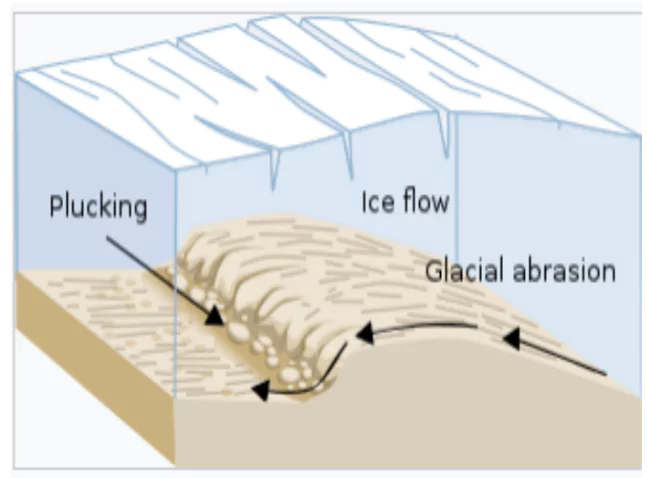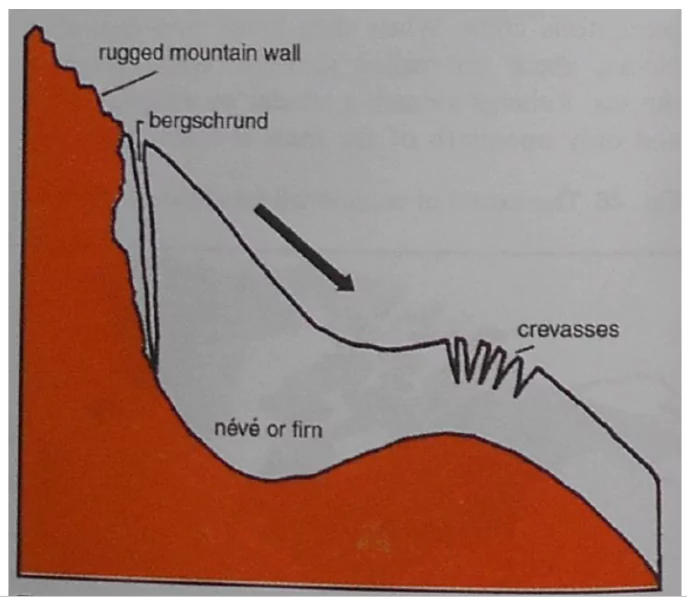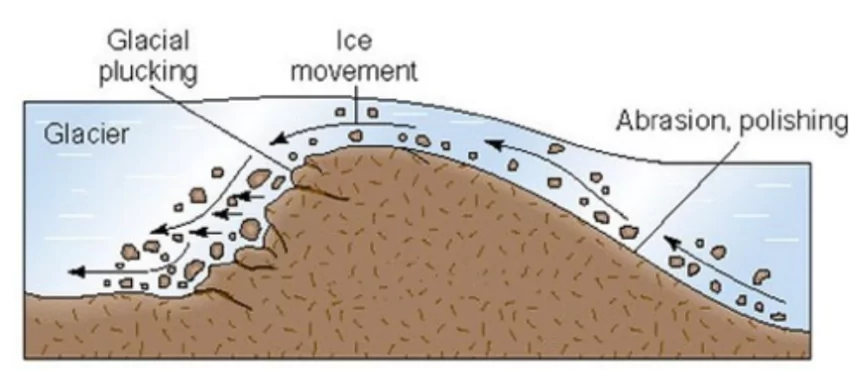![]() April 27, 2024
April 27, 2024
![]() 5604
5604
![]() 0
0
Glaciers are big sheets of ice that slide slowly over the land. They can cover wide areas, like plains next to mountains, or flow down valleys between mountains. Glaciers move slowly because of gravity, which pulls them downhill. Sometimes they move just a little bit each day, while other times they can move more quickly. In this way, glaciers shape the land around them, creating unique and fascinating features called glacial landforms.


 Roche Moutonnee: This is a resistant residual rock hummock.
Roche Moutonnee: This is a resistant residual rock hummock. | Must Read | |
| Current Affairs | Editorial Analysis |
| Upsc Notes | Upsc Blogs |
| NCERT Notes | Free Main Answer Writing |
Glacial erosional landforms are shaped by processes like abrasion, plucking, and polishing, with coarse debris aiding in bedrock and sidewall erosion. From the cirques to aretes, each feature bears witness to the power of ice. Glacial valleys, ribbon lakes, and fjords showcase the transformative impact of glaciers on Earth’s surface. As glaciers advance and retreat, they leave behind a legacy of rugged beauty, marked by crags, horns, and nunataks, etching their story into the fabric of the land.
| Related Articles | |
| The Ganga River System | Formation Of Landform: Impact Of Ice & Waves |
| Earthquakes: Forces, Causes, and Protective Measures | 7 Continents and 5 Oceans in Order of the World |
<div class="new-fform">
</div>

Latest Comments